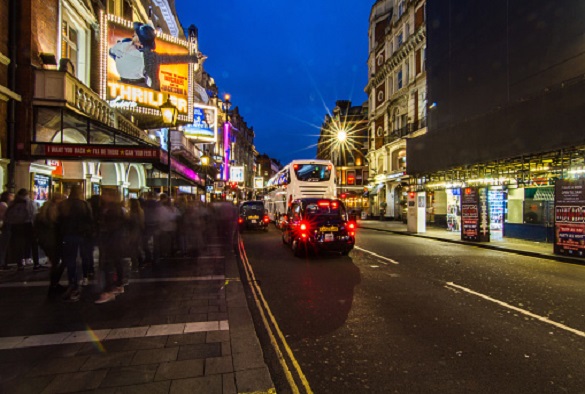Healthiest and unhealthiest places to live in GB
Published on

An analysis of the latest lifestyle and environmental measures by the University of Liverpool has revealed the healthiest and unhealthiest places to live in the country.
Researchers used the latest updated version of their data resource tool which contains a range of lifestyle and environmental measures to identify neighbourhoods that are healthy, and those that are unhealthy.
The type of information which the data tool analysed included levels of air pollution, access to various amenities such as fast food outlets or pubs, and proximity to health services including GPs, parks and recreational spaces.
The study found that London is home to six of the top ten unhealthiest places to live including Hackney, Camden and Soho. They were found to have the greatest access to unhealthy opportunities such as takeaways, pubs and off licenses, combined with high levels of air pollution and low levels of parks and green spaces.
By contrast, the healthiest place to live was Great Torrington in North Devon. The small market town has low levels of pollution, good access to parks and green space, few retail outlets that may encourage poor health-related behaviours, and good access to health services.
Eight of the top ten healthiest places to live were located in Scotland. These included Lochwinnoch in Renfrewshire, Fauldhouse in West Lothian and Marnoch in North Lanarkshire.
Liverpool Senior Lecturer in Health Geography, Dr Mark Green, who undertook the study, said: “Our research, in conjunction with the Consumer Data Research Centre and Public Health England, has allowed us to pull together freely available information from sources such as GP surgeries, Health Centres, fast food outlets, air pollution statistics published by the Environment Agency. Our updated data release makes it now the most comprehensive free source of data on healthy environments available.
“The statistics reveal important insights about the concentration of certain amenities that may be damaging or promote health. For example, on average, individuals in Great Britain are just as close to a pub or bar, as they are to their nearest GP (1.1 km).”
“We also found that 42% of people are within 1 km (or a few minutes’ drive time) of their nearest gambling outlet. These statistics reveal troubling issues with the neighbourhoods we live in and how they may be damaging to our health.”
Professor Alex Singleton, Deputy Director of the Consumer Data Research Centre, said: “Our study found that access was not evenly spread across Great Britain – rural areas have poorer access to many health services, and those services which are seen as damaging to health are often concentrated in poorer areas.
For example, 62% of people who live in the 10% most deprived areas are within 1 km of a fast food outlet compared to 24% in the 10% least deprived areas.”
The data resource is available online (http://maps.cdrc.ac.uk) and free for anyone – from policy makers to members of the public - to explore how near or far away they are to services, and how this varies across their local (and national) regions. Users can log on and can either click on the map or search with a postcode.
Dr Mark Green added: “We anticipate that this resource will be an important tool for citizens and policy makers alike interested in how their neighbourhoods may be associated to their health.”
The data resource is part of the Consumer Data Research Centre (CDRC) which aims to unlock valuable insight from the vast amounts of data collected by business, local and national government organisations.
The findings of this study are presented for the first time at the International Medical Geography Symposium on 1st July 2019.